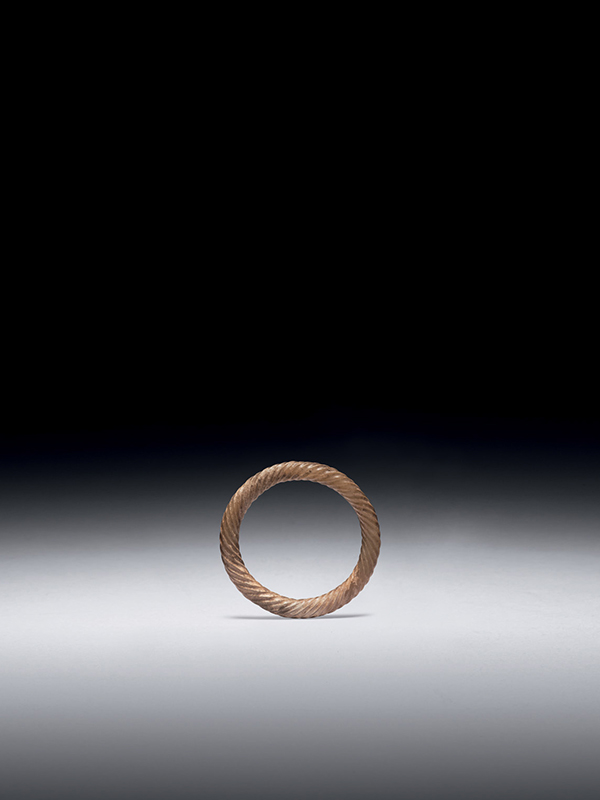Jade ring with grooved carving
A small jade circular ring with the wide centre cut out. The ring is carved from a piece of celadon, yellowish colour jade. The surface of the ring is finely carved with parallel grooves. The jade is smoothly polished, with some traces of calcification.
The outer surface of this jade ring is carved with parallel grooves. The decoration resembles a tightly twisted rope and is known in Chinese as jiao si, literally meaning ‘wrung silk’. This scheme of decoration was first seen on ring discs from the Neolithic period, specifically the Liangzhu Culture (3300-2000 BC) and became very popular during the Warring States period. The exquisite and symmetrical carving not only represents the elegance of the era but also shows the high standard of the jade production technique. A closely comparable jade ring of similar size and style, dated to the Warring States period, was excavated from Guwei village, Henan province during 1950-51 and is now in the collection of the National Museum of China.[1] Further comparable examples dated to the Warring States period and of various size are in the collections of the Hangzhou History Museum,[2] the Shanxi Provincial Institute of Archaeology[3] and the Kwan collection in Hong Kong.[4]
- National Museum of China, online collection archive: http://www.chnmuseum.cn/Default.aspx?TabId=212&AntiqueLanguageID=6905&AspxAutoDetectCookieSupport=1
- This example was excavated from tomb no. 1 at Shitangzhen, Hangzhou, Zhejiang province. In Gu, Fang ed. The Complete Collection of Jades Unearthed in China, vol. 8, Zhejiang, Ke Xue Chu Ban She, Beijing, 2005, p. 196
- This example was excavated from tomb no. 302 at the burial site of Liuquan, Xinjiang, Shangxi province. In Gu, Fang ed. op. cit. vol. 3, Shanxi, p. 214
- Yang, Boda, Chinese Archaic Jade from the Kwan Collection, Chinese University of Hong Kong, Art Gallery, Hong Kong, 1994, nos. 171-4

